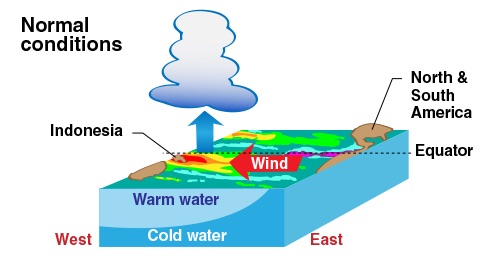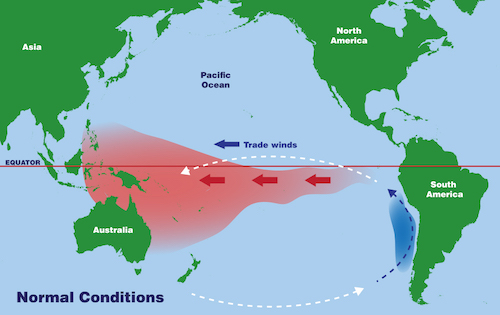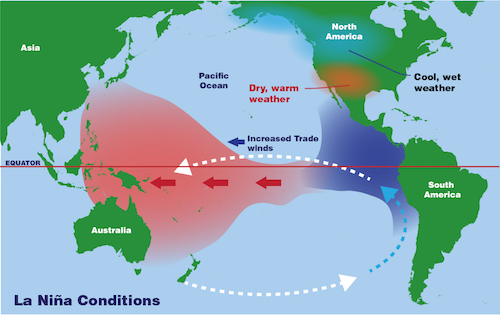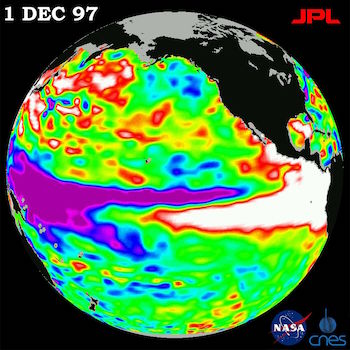The oceans play an important role in Earth's weather. Rain clouds normally form over warm ocean water. When strong winds cause this warm water to move, the clouds and storms move, too.
In normal conditions, winds above the Pacific Ocean gently push warm water west. That warm water travels from the west coast of South America all the way to Indonesia. As the warm water moves, cold water from the bottom of the ocean slowly rises up to take its place.

Credit: NASA/JPL-Caltech
But during La Niña...
In a La Niña year, the winds above the Pacific Ocean are much, much stronger than usual. This usually happens once every few years. The winds are so strong during a La Niña (Spanish for "the girl") that they push lots of warm ocean water west toward Indonesia. And that means that lots of cold water rises to the surface near South America.
This makes the water in the eastern Pacific Ocean degrees a few degrees colder than usual. Even this small change in the ocean's temperature can affect weather all over the world.


Drag the slider tool to see the differences between La Niña conditions and normal conditions in the Pacific Ocean.
Warm water moves west during a La Niña, and so do the clouds. This means that places like Indonesia and Australia can get much more rain than usual. And places like the southwestern United States can be very dry. La Niña weather conditions can also lead to more hurricanes and lightning in other parts of the world.
Thankfully, scientists can predict La Niña weather patterns up to a year before they occur. The GOES-R series of weather satellites can help weather forecasters map the increased lightning and issue earlier and more accurate warnings of severe weather.
What's the difference between El Niño and La Niña?
Both events start in the Pacific Ocean, but they are opposites in almost every other way! La Niña causes water in the eastern Pacific to be colder than usual. In the same region, El Niño can cause the water to be warmer than usual. So, areas that are hit with drought during La Niña years can get lots of rain in El Niño years!








